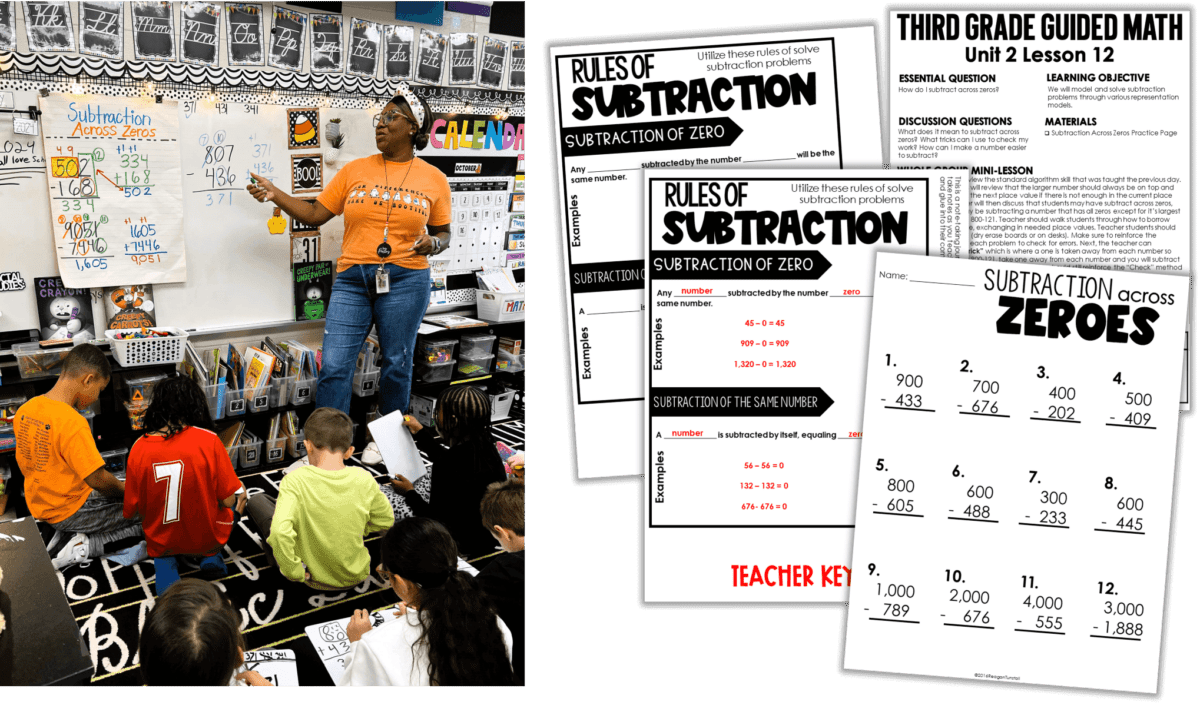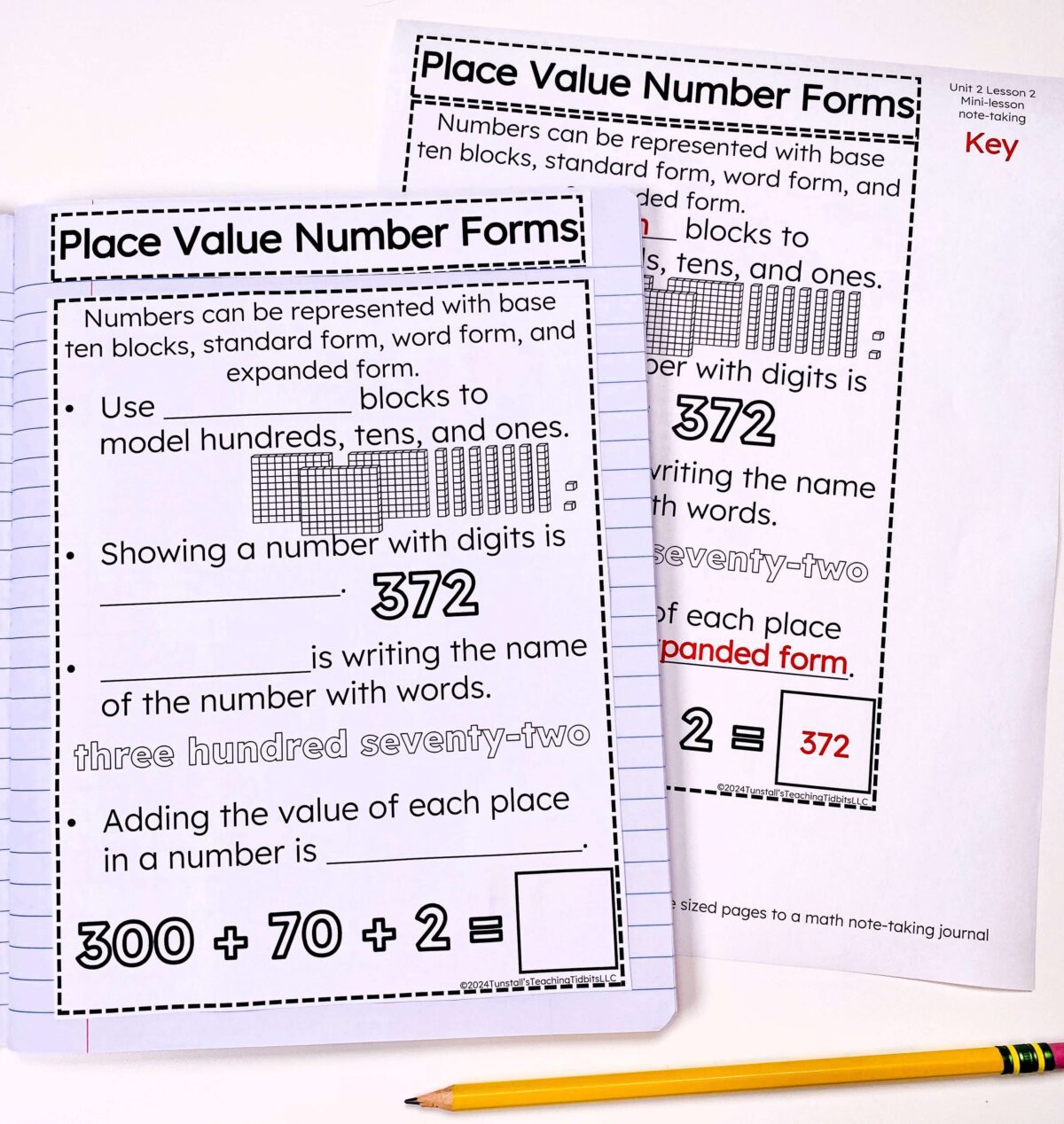Five Reasons Math Notes and Anchor Charts Benefit Math Learning

Are you looking for a way to boost engagement and retention in your math lessons through effective math note-taking? Math note-taking, paired with powerful math anchor charts, is a game changer for math learning. By keeping math notebooks, you’re equipping students with a valuable tool to review key concepts, build math confidence, and align learning with objectives while also teaching organization skills. Let’s dive into more details with five reasons math notes and anchor charts benefit math learning.
We have integrated standards-aligned math note-taking in all the math units below for grades 1-4. These links provide the entire curriculum, but you can also just get units within these bundles.
- First Grade Total Math Curriculum
- Second Grade Total Math Curriculum
- Third Grade Guided Math
- Fourth Grade Guided Math
1. Math Note-Taking Creates a Record of Key Math Learning
Imagine your students flipping through their own personalized math notebooks at the end of the year. These notebooks, filled with anchor charts and math notes, become a tangible record of their growth and learning. Each page reflects lessons they’ve explored and concepts they’ve mastered.
When students cut and glue mini anchor charts or practice problems into their composition books, they’re creating a resource they can revisit. This record of learning fosters pride in their progress and provides a helpful study tool when preparing for assessments.

2. Math Notes Promote Active Engagement During Lessons
Math note-taking encourages students to take an active role in their learning. As you present a new concept, students can follow along by adding notes, diagrams, or examples to their notebooks. Incorporating math anchor charts into this process makes abstract ideas for concrete.

When students participate in creating and maintaining their math notebooks, they’re not just passively listening. They’re processing and organizing information, which strengthens their understanding and retention of key math skills.

3. Anchor Charts Support Visual Learners
Visual aids like math anchor charts are a lifeline for many students who require information to be repeated and accessible beyond one math lesson. Aligning seamlessly with standards for learning, math notes provide a way for students to meet their educational goals. Anchor charts simplify complex ideas into digestible, colorful visuals that are easy to reference. By including these charts in math notebooks, students gain access to a personal visual library of key math concepts.

Whether it’s a step-by-step guide to solving a problem or a quick reminder of geometric shapes, these visual tools help students recall information faster and with greater accuracy.

4. A Math Notebook Fosters Independence and Ownership
A math notebook isn’t just a collection of notes; it’s a student’s personal learning tool. When students create and maintain their own math notebooks, they develop a sense of ownership over their education.
This sense of responsibility motivates students to take care of their notebooks and refer back to them when they need a refresher. Plus, the practice of organizing and summarizing information helps build executive functioning skills that benefit them across all subjects.

5. Math Notes Enhance Collaboration and Classroom Community
Math notebooks provide a guided structure for collaborative learning. During math stations, students can reference math notes and share their charts. This peer-to-peer interaction deepens understanding and strengthens the classroom community.
Additionally, when students share their notes or explain their reasoning, they practice communication skills–an essential part of learning math. Collaborative discussions often spark new insights, helping all students grow.

How to Get Started with Math Note-Taking
Ready to bring math note-taking to your classroom? We have integrated standards-aligned math note-taking in all the math units below for grades 1-4.
- First Grade Total Math Curriculum
- Second Grade Total Math Curriculum
- Third Grade Guided Math
- Fourth Grade Guided Math
Tips for Successful Math Note-Taking
- Provide Composition Books: While the note-taking templates will fit any spiral or notebook, we highly recommend going with the traditional sturdy composition books. If you don’t have the ability to collect these as a school supply, we have an amazon link to how we get ours in bulk.
- Prep a Teacher Key Notebook: To stay organized and ready, we take the time to create our own teacher key notebook. This ensures we will always be ready to guide students through the lessons without having to search for the answer keys during lessons.

- Model Note-Taking Skills: Teaching students pride in ownership and note-taking comes naturally to most teachers because we have an organic love for school supplies and learning. Teach students how to cut on dotted lines, stay in the margines, label with clear clean handwriting, and if you want, integrate highlighting and color too!
- Encourage cross-over: We have our beloved math notes journals, but these prepare us for making a math journal station for students as well! These skills provide students with an application of math skills in a notebook during our math workshop time. We have linked our Learning Logs and Math Journals below for you. These links provide the entire curriculum, but you can also just get units within these bundles.
- First Grade Learning Log
- Second Grade Learning Log
- Third Grade Math Journal
- Fourth Grade Math Journal

By incorporating math notes and anchor charts into your teaching, you’ll create a classroom full of engaged, confident learners. These notebooks will not only support your students this year but will also give them a strong foundation for future math success.
Learn how we integrate Math Note-taking in an effective math block.

 Contact Us
Contact Us








hcsrri
g2tk41
b8b2ck
zegfhd